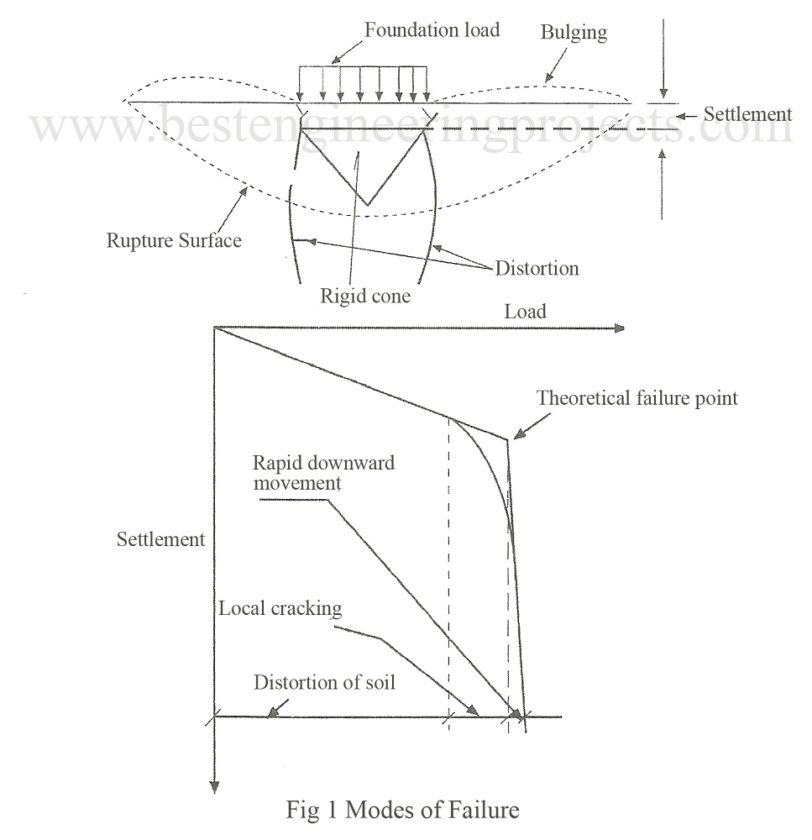Bearing Capacity Theories: When a footing is placed on a soil, the soil deforms and foundation settles as shown in the figure 1. Before failure takes place, the soil below the foundation undergoes into various stages. At first the soil gets distorted. Local cracking follows this after which a rigid cone of the soil is formed directly below the footing. Lastly rupture surfaces are developed and failure of the soil occurs along these rupture surfaces. The stages of failure of bearing capacity theories foundation soil are briefly described below.
Distortion of Soil – In the early stage of loading lateral bulging of the column of the soil directly below the foundation takes place. The surface soil immediately surrounding the foundation settles and a corresponding bulge of the soil is noticed at a great distance. At this stage, the soil gets distorted elastically and stress is proportional to the strain.
Local Cracking – With gradual increase in the foundation load, local shear failure takes place in the soil. The soil gets sheared locally around the foundation perimeter. The load settlement curve does not obey Hooke’s law and transition occurs in soil from elastic state to plastic state.
Formation of Rigid Cone – At this stage, a rigid cone of soil is formed directly below the foundation. With the further increase in load, the cone forces the soil downward and outward and shearing of the soil is initiated.
Development of Rupture Surfaces – The shearing of soil below foundation is continued and shear zones spread sufficiently. Well-defined shear zones develop and finally a curved rupture surface is formed. The foundation sinks rapidly into the soil without any further increase in load and the soil fails along the rupture surface.
Such failure of foundation soil is called bearing capacity failure. Bearing capacity failure causes severe damage to the structure.